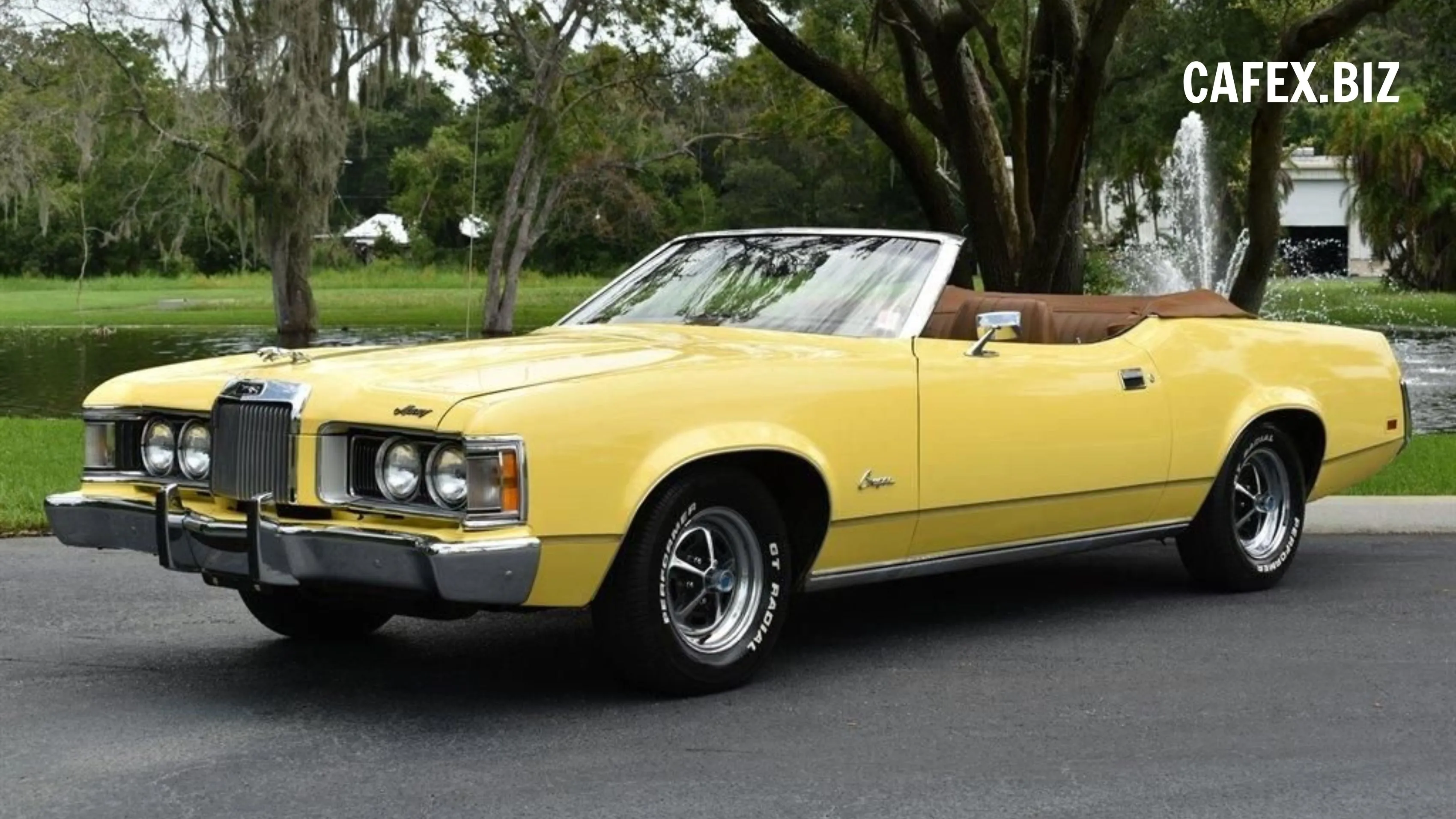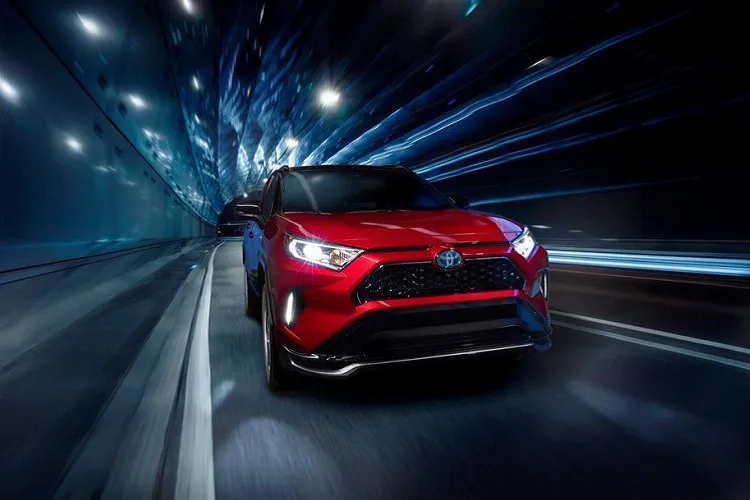The 1973 Mercury Cougar is a classic American car that combines style, power, and luxury. As the last model of the first-generation Cougar, it marked the end of an era in Mercury's lineup, with its distinctive design and performance capabilities.
-1686719520.jpg)
In this article, we will explore the history, design, and engineering aspects of the 1973 Mercury Cougar. We will also discuss its impact on the automotive world and its enduring appeal to car enthusiasts and collectors alike.
1. Mercury: A Brief History
Mercury was a division of the Ford Motor Company, established in 1938 by Edsel Ford, the son of Henry Ford. The brand was positioned between the mainstream Ford lineup and the luxury Lincoln brand, offering upscale vehicles at a more accessible price point. Mercury aimed to provide consumers with stylish, well-built cars that offered a higher level of luxury and performance than the average Ford model.
-1686719579x1024.jpg)
Throughout its history, Mercury produced a variety of cars, including sedans, coupes, convertibles, and station wagons. The brand was discontinued in 2010, but its classic models, such as the 1973 Cougar, remain sought after by collectors and automotive enthusiasts.
2. The Mercury Cougar: Origins and Evolution
The Mercury Cougar was introduced in 1967 as a response to the growing popularity of "pony cars" – compact, sporty coupes characterized by their long hoods and short rear decks. The Ford Mustang, which debuted in 1964, was the original pony car and set the stage for the Cougar and other competitors like the Chevrolet Camaro and Pontiac Firebird.
-1686719610.jpg)
The first-generation Cougar (1967-1973) was based on the Ford Mustang platform but featured a longer wheelbase and a more upscale interior. The Cougar was positioned as a more sophisticated alternative to the Mustang, targeting buyers who sought a higher level of comfort and luxury in their sporty coupes.
Over the years, the Cougar evolved both in terms of design and engineering. The 1973 model, in particular, saw significant changes compared to its predecessors.
3. Design of 1973 Mercury Cougar
Exterior
The 1973 Cougar had a distinctive long and wide body, giving it a muscular and aggressive appearance. It featured a prominent front grille with a horizontal bar design, flanked by quad headlights. The grille and headlights were integrated into a single unit.
-1686719632.jpg)
The front end of the car had a pronounced "Coke bottle" shape, with curved fenders and a slightly raised hood. The rear of the car had a sculpted design with horizontal taillights that spanned the width of the vehicle. The taillights had a unique sequential turn signal feature, where the lights would flash in sequence from the center to the outer edges. The roofline had a fastback design, sloping towards the rear end of the car.
Interior
The interior of the 1973 Cougar was designed to provide a comfortable and luxurious driving experience. It featured a spacious cabin with ample legroom and comfortable seating for up to five passengers. The dashboard had a driver-oriented design, with the main instruments and controls positioned within easy reach of the driver. Various trim options were available, including woodgrain accents, chrome accents, and high-quality upholstery materials, enhancing the overall upscale feel.
-1686719644.jpg)
4. Engine and Performance
The 1973 Mercury Cougar was available with several engine options, each offering a different level of performance. Here are the available engines for the 1973 Cougar:
5.0L (302 cubic inches) V8: This engine produced around 135 horsepower and 233 lb-ft of torque. It was the standard engine for the base and XR-7 models.
5.8L (351 cubic inches) V8: This engine was available in two variants. The 351 Cleveland V8 produced around 177 horsepower and 277 lb-ft of torque, while the 351 Windsor V8 produced around 153 horsepower and 258 lb-ft of torque.
7.0L (429 cubic inches) V8: This big-block engine was the top-of-the-line option for the 1973 Cougar. It produced around 205 horsepower and 328 lb-ft of torque.
The performance of the 1973 Mercury Cougar varied depending on the engine chosen. The larger engines, such as the 351 Cleveland and 429 V8, offered better acceleration and overall performance compared to the base 302 V8. However, due to the era's emission regulations and fuel economy concerns, the performance figures of these engines were somewhat lower than their predecessors from earlier years.
5. Sales and Production
The 1973 Mercury Cougar was the second generation of the Cougar model. Here are some details about its sales and production:
A total of 91,139 Mercury Cougars were produced for the 1973 model year. This was a slight decrease from the 1972 model year production of 92,352 units.
The 1973 Cougar came in three body styles:
Hardtop coupe - 67,414 units produced
Convertible - 8,865 units
4-door sedan - 14,860 units
The hardtop coupe was by far the most popular body style, accounting for over 74% of 1973 Cougar production. Sales of the 1973 Cougar reached 87,195 units in the U.S. and Canada. This represented a 10.5% decrease from 1972 Cougar sales of 97,690 units.
The base model 1973 Cougar retailed for $3,173, equivalent to about $18,500 in today's dollars adjusted for inflation. The most expensive 1973 Cougar was the XR-7 convertible at $4,310, equivalent to $25,200 today inflation-adjusted.
6. Cultural Significance
The 1973 Mercury Cougar holds cultural significance as it represents an era of American automotive design and embodies the characteristics of a classic American muscle car. Here are some aspects of its cultural significance:
Design and Styling
The 1973 Cougar featured a distinctive design that epitomized the aesthetics of the early 1970s. It had a long hood, a sleek profile, and a pronounced front grille, giving it a muscular and aggressive appearance. The design elements of the 1973 Cougar reflected the trends of the time and contributed to its cultural appeal.
-1686719729.jpg)
American Muscle Car Heritage
The Cougar was part of the American muscle car tradition, which gained significant popularity during the 1960s and 1970s. It represented power, performance, and a sense of freedom on the open road. As a result, the 1973 Cougar holds a place in the lineage of American muscle cars and is recognized as an important symbol of that era.
Pop Culture and Media
The 1973 Mercury Cougar has appeared in various movies, television shows, and other forms of media, further solidifying its cultural significance. Its inclusion in popular entertainment has helped to keep its legacy alive and capture the imagination of car enthusiasts and fans of classic vehicles.
While the 1973 Mercury Cougar may not have achieved the same level of cultural fame as some other iconic cars from the same era, it remains a notable representation of American automotive history, design, and performance.
7. Market Reception
The market reception of the 1973 Mercury Cougar was affected by various factors during its time of production. Here are some key aspects of its market reception:
External Factors
The 1973 oil crisis had a significant impact on the automotive industry, leading to increased fuel prices and a shift in consumer preferences towards smaller, more fuel-efficient vehicles. This affected the market reception of larger cars like the Cougar, as their higher fuel consumption became less desirable.
-1686719756.jpg)
Styling Changes
The 1973 Cougar underwent a redesign compared to previous model years, adopting a larger and more elongated body style. Some enthusiasts and consumers appreciated the new design, while others preferred the earlier, more compact models. The changes in styling could have influenced the market's reception among potential buyers.
Emission Regulations
The 1970s saw the introduction of stricter emission regulations, which impacted the performance and drivability of many vehicles, including the Cougar. The implementation of emission control technologies could have affected the market's reception, as some buyers may have found the reduced performance less appealing.
-1686719774x1024.jpg)
Sales Decline
The overall market demand for larger, performance-oriented vehicles decreased during the 1970s due to economic factors, fuel concerns, and changing consumer preferences. These factors likely contributed to a decline in sales of the 1973 Cougar compared to previous years.
-1686719793x1024.jpg)
The 1973 Cougar faced challenges in the market, but it still had a loyal fan base and attracted buyers who appreciated its styling, performance, and heritage as a classic American muscle car. The market reception varied among different consumer segments and was influenced by the prevailing economic and regulatory conditions of the time.
8. Collectibility and Restoration
The 1973 Mercury Cougar has gained collectability and restoration interest among enthusiasts and collectors of classic cars. Here are some key points regarding its collectability and Restoration:
Rarity
Compared to earlier model years of the Cougar, the 1973 version had relatively lower production numbers due to various factors such as the oil crisis and changing market preferences. This relative rarity can make the 1973 Cougar more desirable among collectors and increase its collectability.
Popularity among Restorers
The 1973 Cougar has a dedicated community of restorers and enthusiasts who work to preserve, restore, and maintain these vehicles. This community provides resources, expertise, and a shared passion for the car, making it easier for individuals interested in restoring a 1973 Cougar to find support and guidance.
-1686719816.jpg)
Aftermarket Support
There is a range of aftermarket parts and accessories available for the 1973 Cougar, which facilitates the restoration process. These parts allow for a more accurate restoration or customization, enhancing the appeal of the car for collectors.
Investment Potential
Depending on the condition, rarity, and desirability, a properly restored 1973 Cougar can hold value as a collectible car. The demand and market value for classic muscle cars have been known to appreciate over time, making them potential investments for collectors.


